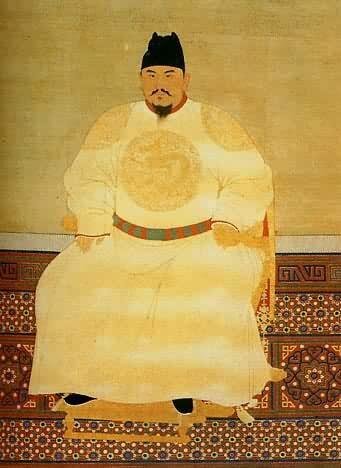Presumably it was Mongolian Yuan dynasty — the dynasty of nomads, who conquered highly-developed China — that conduced the appearance of loose-leaf tea. All sophisticated ceremonies were alien to them, everything had to be simplified. Rich of vitamins and healthsome substances the tea perfectly complimented the ration of Mongols, which consisted predominantly of animal and fatty food. However they were unwilling to spend much time on its preparation. By the way this was one of the periods when Mongols induced adoption of Chinese tea culture by many nomadic tribes of Asia. With closer consideration you will find out that they prefer to drink a brick tea, which they break and put into the pot. Some boil it with milk, some — with meat stock, all of this being the echoes of soup tea period.
By the beginning of 14 century the common folk in China for long since were drinking loose-leaf tea, spearing themselves from compressing it into cakes they brewed it in more simple way. But at court old rituals were still in use.
The Chinese emperor of Ming dynasty, Zhu Yuanzhang was the one who drew a line under the culture of tea cakes produced of steamed leaves. He originated from a simple folk and was strange to old-fashioned rituals. In 1391 he imposed a decree whereby putting a limit on the production of brick tea. The execution of the decree was strictly watched and all disobeyed were punished. Everybody was compelled to produce a loose-leaf tea. This tea was brewed in a new manner: by placing it in a vessel and steeping with hot water. In this way the tea leaves delivered their flavor much better, and the brewing procedure became faster and less complicated. However in course of time, as it often happens in China, this new simplified brewing method grew into a new tea ceremony.
Around the same time it became common to roast tea leaves instead of steaming them. It gave a push to the appearance of many new types of tea and complete transformation of the old one.
Before 14 century there was only one type of tea — steamed green tea.
Green and jasmine teas, as we know them today, came up since 15 century.
Some time later the white tea has divided into the separate group.
Red tea and oolongs appeared in 17–18 century.
Pu’ers existed somewhat separately from this process. In Yunnan they are known since Han dynasty (206 B.C. – 220 A.D.), however recognized at court and therefore spread all over China they were only in 18 century. Which is small wonder as Yunnan was the peripheral part of the Celestial Empire and for many centuries changed hands of many rulers. Therewith it was not populated by Hans (China’s titular nation) but by a number of other minor ethnic groups producing tea for themselves.
Yellow tea distinguished into a separate tea type by the end of 19 century.
Shu pu’er was invented in 1972.
Now, with understanding of how the tea developed in China, which ways of processing and brewing it came through, aware of its all amazing history, we may proceed to the study of each tea type production technique.

